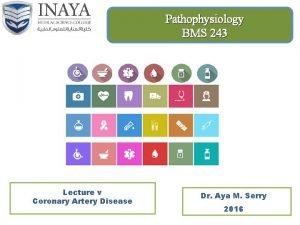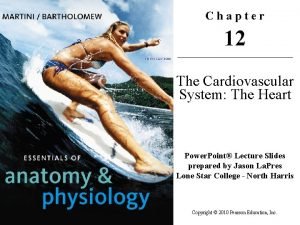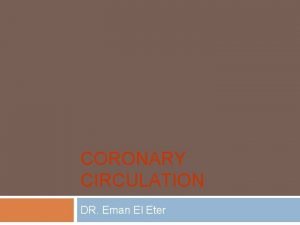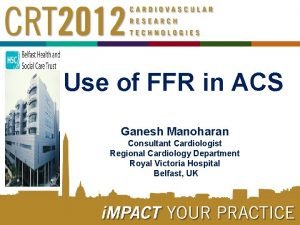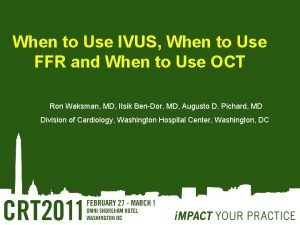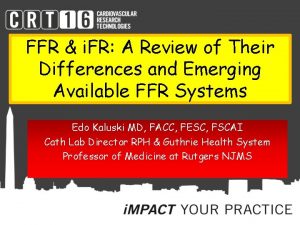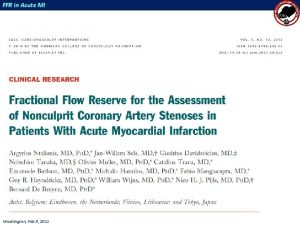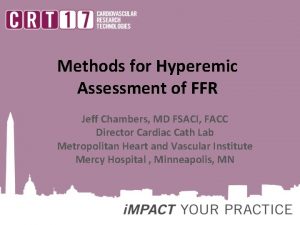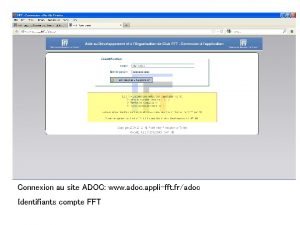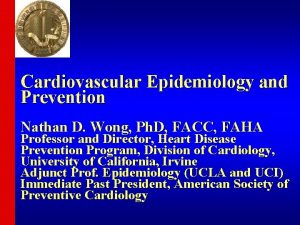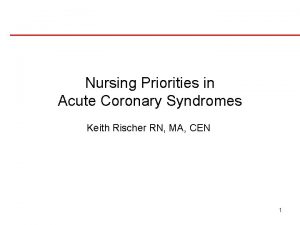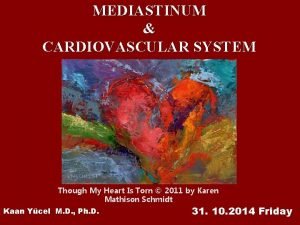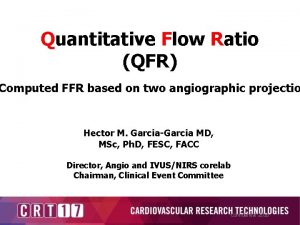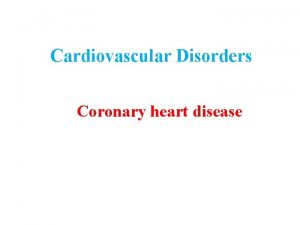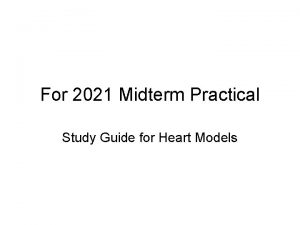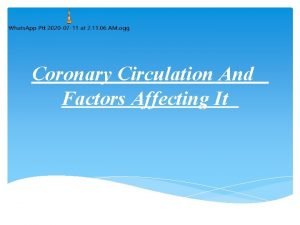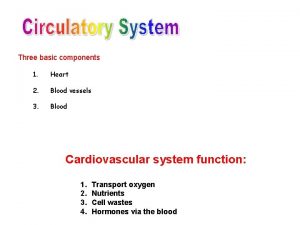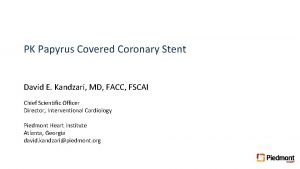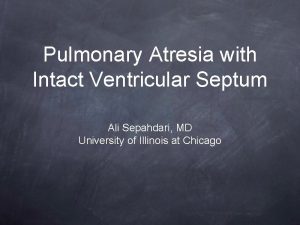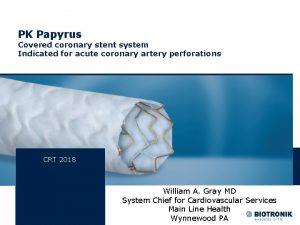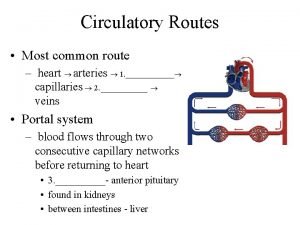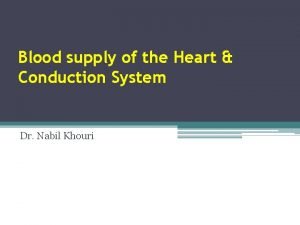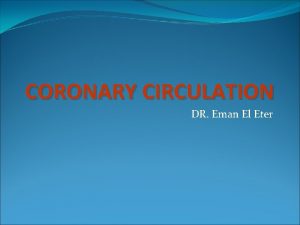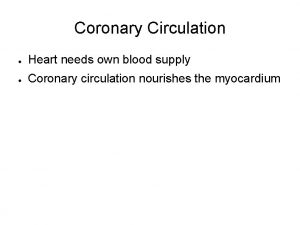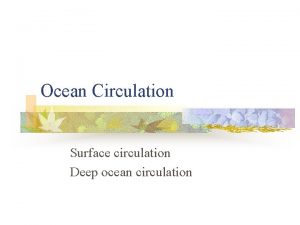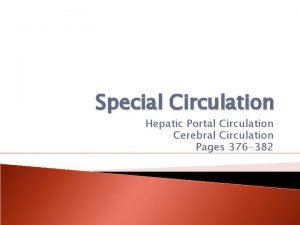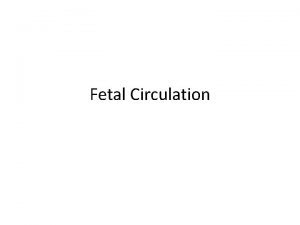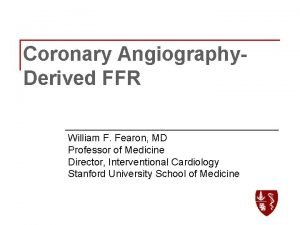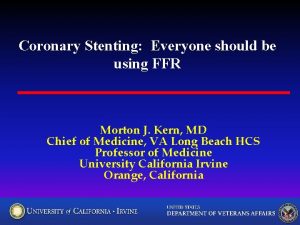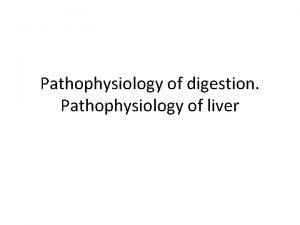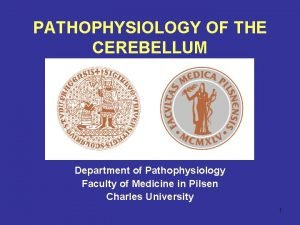Pathophysiology of the coronary circulation role of FFR
















































- Slides: 48

Pathophysiology of the coronary circulation: role of FFR Giuseppe Biondi Zoccai University of Modena and Reggio Emilia, Modena, Italy gbiondizoccai@gmail. com

Functional significance of coronary stenosis • Past, present, future • Pathophysiology • Definitions and basics • Other aspects

The original balloon from Andreas Gruentzig

The first coronary angioplasty by Andreas Gruentzig

Functional significance of coronary stenosis • Past, present, future • Pathophysiology • Definitions and basics • Other aspects

Basic coronary physiology • Coronary blood flow = 3 -5% of CO • Resting myocardial O 2 demand is extremely high (20 x skeletal O 2 demand) • Myocardium extracts maximum O 2 from blood (80% versus 30 -40% skeletal muscle) • Myocardium has high capillary density (3000 -4000/mm 2 versus 500 -2000/mm 2 skeletal muscle) • Therefore, only way to meet increasing demand is to increase blood flow

Maintaining coronary flow

Maintaining coronary flow

Coronary circulation Myocardial blood flow = coronary flow (Qs) + collateral flow (Qc)

Coronary circulation Pressure derived flow measurements Pressure (Pmean) Blood flow (Q) = Resistance (R)

Coronary circulation Resistance distribution in the coronary tree

Stenosis lead to drop in pressure

Stenosis lead to drop in pressure

Coronary blood flow vs % diameter stenosis: Autoregulation of resting flow 50% 85% Rest CBF Ml/gm/min 1. 0 0% 0 50 % Stenosis 80

Coronary reserve

Functional significance of coronary stenosis • Past, present, future • Pathophysiology • Definitions and basics • Key aspects

Coronary circulation

What is FFR? FFR is a ratio or % of two flows: Maximum hyperemic flow in the presence of a stenosis FFR = Normal maximum flow FFR represents the extent to wich maximal myocardial blood flow is limited by the presence of epicardial stenosis FFR is a segment by segment evaluation of the flow

Pressure derived flow measurements

Theoretical bases of FFR

Pressure derived flow measurements FFRmyo= Q QN ( Pd – P v ) = R = (Pa - Pv) (Pd – Pv) = (Pa - Pv) Pd Pa R • Because the myocardial vascular bed is maximally vasodilated its resistance is minimal and constant. • Because, generally, central venous pressure is close to 0 R = Myocardial resistance at maximum vasodilation Pd = Hyperemic distal coronary pressure Pa = Mean aortic pressure PV = Mean central venous pressure

Relative pressure and relative flow QS = Flow in stenotic vessel QN = Flow in normal vessel Pijls et al, Circulation 1993; 87: 1354 -67

Rationale of FFR

Rationale of FFR ΔP = 30 mm Hg in all 3 cases but Driving pressure over the myocardium (wich determines myocardial perfusion at maximum vasodilatation) varies from 25 to 70 mm Hg Hyperemic blood flow is not determined by ΔP but by (Pd-Pv)/(Pa-Pv) = FFR myo

Intermediate lesions 54 -y-o. man, PTCA prox LAD 8 years ago, stable angina, occluded distal LCx Adenosine 40 µg IC 48 -y-o. man, aborted sudden death, no other stenosis at angio Adenosine 40 µg IC • Intermediate stenosis • Mild-to-moderate stenosis Angiographist’s glossary • Non flow limiting stenosis • Non significant stenosis FFR = 90 / 93 = 0. 97 • Gross irregularity FFR = 50 / 92 = 0. 53 • . . .

Coronary circulation Myocardial blood flow = coronary flow (Qs) + collateral flow (Qc)

An identical stenosis, but. . . • 26 col-schema fcf (figuur) 100 50 0 Pd Poor collaterals low FFR = 0. 50

An identical stenosis, but. . . • 26 col-schema fcf (figuur) 100 75 0 Pd Good collaterals higher FFR = 0. 75

Visible collaterals on the coronary angiogram (Rentrop) and fractional collateral blood flow Qc/Qn

Comparison with stress testing

Anatomic assesement of a stenosis % diameter stenosis Angiographic significance of coronary lesions 0 10 20 30 Discrete nonischemic 40 50 60 70 Ambiguous Borderline Intermediate Moderate Gould, Am J Cardiol 1974; 33: 87 -94 80 90 100 Critical Ischemic Severe Significant

Physiologic lesion assessment Threshold value of FFR to detect significant stenosis Gray zone FFR Non-signif. 1. 0 0. 80 Significant stenosis 0. 75 Sensitivity : 90% Specificity : 100% Pijls et al, New Engl J Med 1996; 334: 1703 -1708 0

Visual angiographic assessment vs FFR in the FAME trial Tonino et al, J Am Coll Cardiol 2010; 55: 2816 -21

Functional significance of coronary stenosis • Past, present, future • Pathophysiology • Definitions and basics • Other aspects

Acute microvascular damage in myocardial infarction STEMI Variable degree of reversible microvascular stunning Maximum achievable flow is less Smaller gradient and higher FFR across any given stenosis With time, the microvasculature may recover, maximum achievable flow may increase, and a larger gradient with a lower FFR may be measured across a given stenosis

Similar stenosis but different extent of perfusion area 50 ml /min is too low Normal Myocardium 50 ml /min is sufficient Scar Normal Myocardium FFR = degree of stenosis and extent of perfused miocardial mass

What about serial lesions?

Hyperemic stimulants

Hyperemic stimulants Jeremias et al, Am Heart J 2000; 140: 651 -7

Hyperemic stimulants Casella et al, Am Heart J 2004; 148: 590 -5

What about coffee?

What about severe left ventricular hypertrophy? In severe left ventricular hypertrophy, there is an exaggerated increase of left ventricular mass in comparison to the vascular bed, resulting in the potential for ischemia even in normal or almost normal coronary arteries Thus, sensitivity may be reduced (cut-off >0. 80? ) However, specificity remains satisfactory

What about lesion length? Brosh et al, Am Heart J 2005; 150: 338 -43

What about microcirculation?

Take home messages

Take home messages • Normal value = 1. 0 for every patient and every artery • FFR is not influenced by changing hemodynamic conditions (heart rate, blood pressure, contractility) • FFR specifically relates the influence of the epicardial stenosis to viable myocardial perfusion area and blood flow • FFR accounts for collaterals • FFR has a circumscript threshold value (~ 0. 75 – 0. 80 ) to indicate ischemia • FFR is easy to measure (success rate 99 %) and extremely reproducible • Pressure measurement has un unequaled spatial resolution (pressure pull-back curve) • Caution in acute myocardial infarction and LV hypertrophy

Interested in more?

Thank you for your attention For any correspondence: gbiondizoccai@gmail. com For these and further slides on these topics feel free to visit the metcardio. org website: http: //www. metcardio. org/slides. html
 Coronary artery disease pathophysiology
Coronary artery disease pathophysiology Cardiac cycle animation
Cardiac cycle animation Coronary circulation of heart
Coronary circulation of heart Flow of coronary circulation
Flow of coronary circulation Coronary circulation
Coronary circulation Structure of blood vessels
Structure of blood vessels Single vs double circulatory system
Single vs double circulatory system Single circulation and double circulation
Single circulation and double circulation Bronchioles
Bronchioles Ffr
Ffr Https oval e ffr fr
Https oval e ffr fr Disadvantages of ffr
Disadvantages of ffr Recruter et fidéliser bénévoles ffr
Recruter et fidéliser bénévoles ffr Ivus and ffr
Ivus and ffr Tera ffr
Tera ffr Ffr i
Ffr i Ffr dijagnostika man
Ffr dijagnostika man Comet ffr wire
Comet ffr wire Comet ffr wire
Comet ffr wire Fradoc
Fradoc Coronary calcium score guidelines
Coronary calcium score guidelines Mesa coronary calcium score
Mesa coronary calcium score Acute coronary syndrome
Acute coronary syndrome Coronary groove of heart
Coronary groove of heart Ductus choledochus
Ductus choledochus Mesa coronary calcium score
Mesa coronary calcium score Global registry of acute coronary events
Global registry of acute coronary events Dipyrimadole
Dipyrimadole Coronary personality
Coronary personality Qfr coronary
Qfr coronary Coronary heart disease
Coronary heart disease Unlocking of knee joint
Unlocking of knee joint Coronary artery disease
Coronary artery disease Superadded changes in coronary atherosclerosis
Superadded changes in coronary atherosclerosis Chronic coronary syndrome
Chronic coronary syndrome Left ling
Left ling Shepherd crook rca
Shepherd crook rca Pulmonary semilunar valve
Pulmonary semilunar valve Coronary blood flow
Coronary blood flow Good morning blood
Good morning blood Coronary perfusion pressure
Coronary perfusion pressure Fossa ovalis
Fossa ovalis Right atrioventricular valve
Right atrioventricular valve Pk papyrus covered coronary stent system
Pk papyrus covered coronary stent system Ali sepahdari
Ali sepahdari Stent papyrus
Stent papyrus Coronary circulatory routes
Coronary circulatory routes Anterior cardiac veins of the right ventricle
Anterior cardiac veins of the right ventricle Right and left aortic sinus
Right and left aortic sinus
